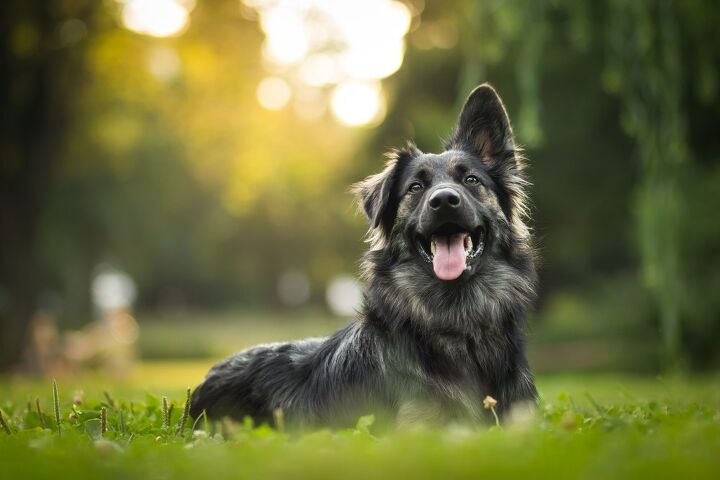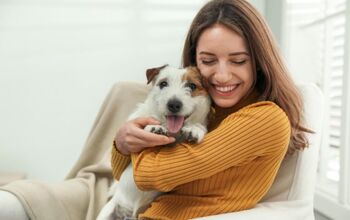A Guide to Dog Menstruation

Every woman is familiar with “that time of the month,” but did you know that female dogs go through the cycle of menstruation as well? In dogs, it’s called the estrus cycle but it’s typically referred to as “heat.” Keep reading to learn more about this cycle and how to deal with it.
When Do Female Dogs Start Menstruating?
A female dog will have her first heat cycle when she becomes sexually mature – when she reaches puberty. There is no one-size-fits all guide to when a dog will reach puberty because it depends on a variety of factors, primarily breed and size. Generally speaking, female dogs can have their first heat around the time they reach 6 months of age (which is why most veterinarians recommend spaying female puppies before that age). Smaller breeds often go into heat for the first time before they reach six months and larger breeds may not have their first cycle until they are 12 to 18 months old. Regardless what age it happens, a dog’s first heat cycle means they are capable of becoming pregnant.
Related: Understanding The Dog Heat Cycle
How Often Do Dogs Go Into Heat?
Once a female dog has her first heat cycle, she’ll go into heat roughly twice a year, about every six months. It takes time for a dog’s cycle to become regular, however, and breed size influences how often the cycle happens. Small breeds, for example, may cycle three times a year while large and giant breeds may only have one cycle every 12 to 18 months. To determine how often you can expect your dog to go into heat, do a little research on the breed or ask your veterinarian.
What Are the Signs of Heat in Dogs?
It’s a good idea to pay attention to the signs of heat so you can protect your dog against unwanted pregnancy. The earliest sign of heat is swelling of the vulva, but you probably aren’t paying a lot of attention to that part of your dog. The first thing you’re likely to notice is a bloody discharge. Some dogs bleed more heavily than others, so you may need to put a diaper on your dog or be prepared to do a lot of cleaning.
Related: What is an Ovary-Sparing Spay?
Once the cycle begins, the discharge will become increasingly waterier and the dog may start to display marking behavior. During this time, the dog will also be putting off pheromones – pheromones which a male dog can detect from a great distance. When the discharge becomes watery, this is when the dog is most fertile and when she will be receptive to breeding. If the dog is bred during this window, she is most likely to become pregnant.
The Basics of Pregnancy in Dogs
Once a dog becomes pregnant, she enters the gestation period – the period during which the puppies develop in her womb. This stage lasts 9 weeks, or about 63 days. It won’t be for three weeks after conception, however, that you’ll be able to detect the pregnancy. After about 28 days, a veterinarian will be able to palpate the dog’s abdomen to feel the puppies and it is safe to perform an ultrasound after about 25 days. At 6 weeks, the puppies’ bones will have calcified enough to show up on x-ray.
The cycle of life is a beautiful and amazing thing, but there are risks associated with pregnancy in dogs – especially for breeds with large heads like Bulldogs. Failing to spay a female dog also increases her risk of uterine infections and certain types of cancer. Think very carefully before you choose to breed your dog and if you’re sure you aren’t going to breed her, it’s best to have her spayed by one year of age.

Kate Barrington is the loving owner of two cats (Bagel and Munchkin) and a noisy herd of guinea pigs. Having grown up with golden retrievers, Kate has a great deal of experience with dogs but labels herself a lover of all pets. Having received a Bachelor's degree in English, Kate has combined her love for pets and her passion for writing to create her own freelance writing business, specializing in the pet niche.
More by Kate Barrington























